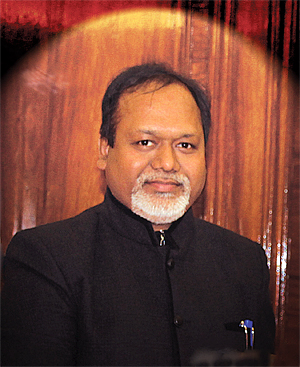INDIAN ARMED FORCES CHIEFS ON OUR RELENTLESS AND FOCUSED PUBLISHING EFFORTS

The insightful articles, inspiring narrations and analytical perspectives presented by the Editorial Team, establish an alluring connect with the reader. My compliments and best wishes to SP Guide Publications.

"Over the past 60 years, the growth of SP Guide Publications has mirrored the rising stature of Indian Navy. Its well-researched and informative magazines on Defence and Aerospace sector have served to shape an educated opinion of our military personnel, policy makers and the public alike. I wish SP's Publication team continued success, fair winds and following seas in all future endeavour!"

Since, its inception in 1964, SP Guide Publications has consistently demonstrated commitment to high-quality journalism in the aerospace and defence sectors, earning a well-deserved reputation as Asia's largest media house in this domain. I wish SP Guide Publications continued success in its pursuit of excellence.
A Word from Editor-in-Chief
The display of concern for national security interests by the Indian political leadership has indeed been unprecedented

Just when the Indian Air Force (IAF) was beginning to lose hope about getting the Rafale combat jets from Dassault Aviation through the DPP route, came the news from Paris about the deal struck between Prime Minister Narendra Modi and the President of France, François Hollande, on the supply of 36 combat jets to India. The tender for 126 Rafale medium multi-role combat aircraft (MMRCA) having reached a dead end, without dithering at all, the Indian Prime Minister displaying a remarkable initiative, switched track to the Government-to-Government route to secure procurement of the fighter aircraft that the IAF sorely needs. There are good reasons to believe that the deal will not end with the order for 36 aircraft that will be delivered in the first two years from now; but will be followed up with further orders through the Government-to-Government route to ensure that the IAF is equipped with as many of the combat jets that are necessary to restore its operational edge that has been seriously eroded over particularly the last decade.
The display of concern for national security interests by the Indian political leadership has indeed been unprecedented. Besides, this initiative by the Prime Minister of India will further strengthen the strategic partnership between the two nations. This issue of SP’s Aviation has a detailed coverage the way India and France have over the years sustained a high level of cooperation despite international pulls and pressures.
The IAF has once again staged a convincing display of its strategic reach when it deployed its newly acquired C-17 Globemaster III aircraft to rescue thousands of Indian nationals working in Yemen who were trapped in the violent sectarian conflict raging in what was in the days gone by a peaceful state in the Middle East. The Indian expatriate community ought not to harbour any doubts about the nation standing by them in the hour of need.
There is an urgent need to review the performance of and institute reforms in the Indian aerospace major the Hindustan Aeronautics Limited (HAL) that is believed to have been a stumbling block in the finalisation of the MMRCA tender. In this issue there is a report on the performance of HAL and a suggestion that privatisation could be the answer to the ills it is afflicted with. Meanwhile, after tasting success with the Embraer 145-based Airborne Early Warning and Control System, the Defence Research and Development Organisation (DRDO) is developing an indigenous Airborne Early Warning and Control System (AEW&CS) mounted on a larger platform for which the Airbus A330 has been identified. The Defence Acquisition Council has given the green signal for the project. R. Chandrakanth of SP’s Aviation evaluates the growing awareness of nations of the importance of maritime security for their well being and reviews the wide range of options available in the global market for maritime patrol aircraft.
On the civil aviation front, one issue that is agitating the airline industry is the ‘5/20 Rule’ that restricts international operations by start-up airlines. While the airline operators are divided on this issue on predictable lines, the government is exploring options to either abrogate this rule or water it down. This issue has detailed analysis by two different authors of the differing perspectives. Another impediment for the growth of the airline industry in India is the lack of coordination and cooperation between the mainline and regional carriers. This problem needs a serious look by the authorities concerned.
In the regime of business and general aviation, Chandrakanth observes that the more popular routes for international travel out of India are to destinations in the neighbouring region. Chandrakanth also looks at the newly emerging Helicopter Emergency Medical Service in India and how critical is such a facility for saving lives.
All these and more in this issue. Welcome aboard and happy landings!





